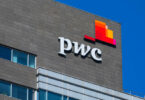Today at the Blockchain Expo in London one of the sessions focused on the benefits and challenges of incorporating blockchain into your business model.
The first challenge is that blockchain confuses a lot of people. William Lovell, Head of Future Technology at the Bank of England, commented that end users don’t need to understand blockchain. He compared it to consumers that use services that are hosted on Amazon Web Services (AWS), yet they don’t know that AWS exists (for example, Netflix). So consumers don’t need to understand every aspect, but it’s worth appreciating that blockchain gives people a level of control over data which they haven’t had in the past.
Likewise, PwC’s Chris Clements believes the emphasis should be on the solution to problems rather than the technology. He gave the example of PwC’s credentialing solution. The message is that it makes it easier to carry and control your credentials. When describing it, blockchain is only mentioned in the fourth or fifth sentence.
Why blockchain?
On a related note, there’s also the challenge of explaining the benefits of blockchain within the corporation. Maersk’s Suyash Shrivastava echoed the importance of emphasizing the problem it’s trying to solve. For shipping, the benefit is reducing documentation and bringing efficiencies including through automated payments. Without clear benefits, curiosity is not enough to secure investment.
For communicating benefits, the Bank of England’s Lovell is a fan of “seeing is believing”. The very first proof of concept that the Bank of England ran was with PwC using ethereum. It was a simple demonstration of how a central bank payment system based on a distributed ledger could work. As part of the test, they unplugged the node hosted by the central bank, but the payments still flowed because the other nodes were still running. That enabled a light bulb moment about how the distributed aspect works.
Maersk’s Shrivastava highlighted a challenge beyond explaining benefits. In shipping, technology adoption is usually slow. Blockchain technology needs a highly agile framework which may not fit in with existing applications such as those running on Maersk’s mainframe. Hence he sees a need to assess whether the current internal IT department is equipped to deal with the agility needed.
Governance challenges
On a separate conference panel about energy, governance was raised several times. Panelists acknowledged that dealing with regulators had proved easier than expected, in part because of sandboxes. But governance issues – collaborating with competitors – are time-consuming.
Joanna Hubbard CEO of energy startup Electron is building an energy asset register that includes data such as electricity and gas meter supply points throughout the UK. She noted that much of the coordination problem is human not technology. By the time the organizations involved decide to collaborate, the technology decision can be delegated to the chief architect. Roughly 50% of the asset register budget was around governance.
Yannis Perrakis from BP also highlighted governance as a significant issue. BP is an investor in oil post-trade company VAKT which incorporated as a joint venture. Perrakis thinks that worked, but he believes that there isn’t a single governance structure that’s appropriate for all projects. He also pointed out that it’s not unusual for industry discussions to start about blockchain, evolve to governance and that sometimes opens up opportunities beyond blockchain.
Getting to scale
Blockchain applications are starting to go into production, but when will they demonstrate scale?
PwC’s Chris Clement said there’s a common misconception, not just with blockchain, that one can go straight from incubation to scale. But there’s a lot in between. Instead, it’s important to slowly move through pilots into the scale phase. There’s also a need to prove blockchain’s scale in production at a level of a thousand transactions per second and thousands of users.
Perrakis from BP mentioned scalability as well as speed, security and decentralization as the technical issues. Many of the blockchain use cases sell themselves, whether that’s improved transparency, automation or optimizing working capital. However, he said it’s now up to those developing blockchain solutions to prove these benefits.







